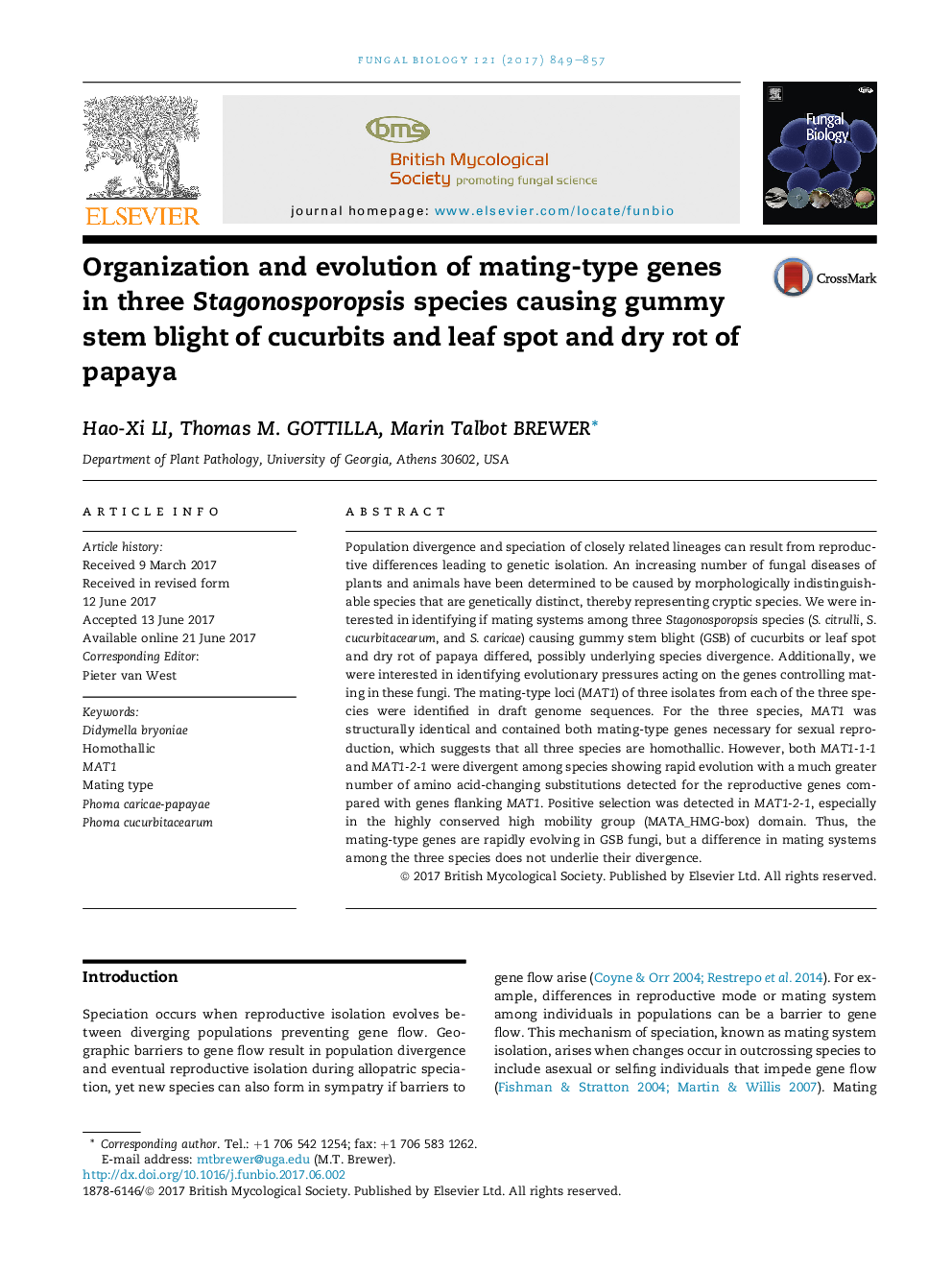| Article ID | Journal | Published Year | Pages | File Type |
|---|---|---|---|---|
| 5739554 | Fungal Biology | 2017 | 9 Pages |
â¢MAT1 identified in three Stagonosporopsis species causing gummy stem blight (GSB).â¢Both idiomorphs identified in each genome indicating homothallism.â¢Positive selection is acting on the mating-type genes.
Population divergence and speciation of closely related lineages can result from reproductive differences leading to genetic isolation. An increasing number of fungal diseases of plants and animals have been determined to be caused by morphologically indistinguishable species that are genetically distinct, thereby representing cryptic species. We were interested in identifying if mating systems among three Stagonosporopsis species (S. citrulli, S. cucurbitacearum, and S. caricae) causing gummy stem blight (GSB) of cucurbits or leaf spot and dry rot of papaya differed, possibly underlying species divergence. Additionally, we were interested in identifying evolutionary pressures acting on the genes controlling mating in these fungi. The mating-type loci (MAT1) of three isolates from each of the three species were identified in draft genome sequences. For the three species, MAT1 was structurally identical and contained both mating-type genes necessary for sexual reproduction, which suggests that all three species are homothallic. However, both MAT1-1-1 and MAT1-2-1 were divergent among species showing rapid evolution with a much greater number of amino acid-changing substitutions detected for the reproductive genes compared with genes flanking MAT1. Positive selection was detected in MAT1-2-1, especially in the highly conserved high mobility group (MATA_HMG-box) domain. Thus, the mating-type genes are rapidly evolving in GSB fungi, but a difference in mating systems among the three species does not underlie their divergence.
